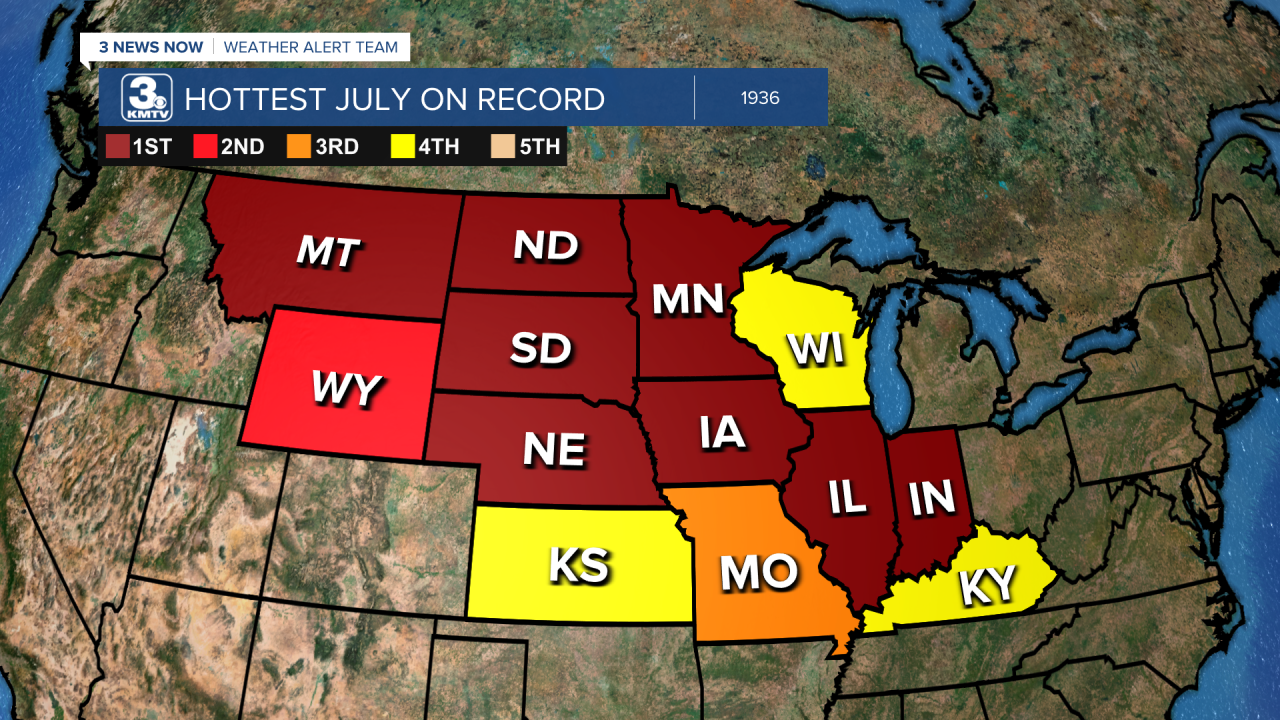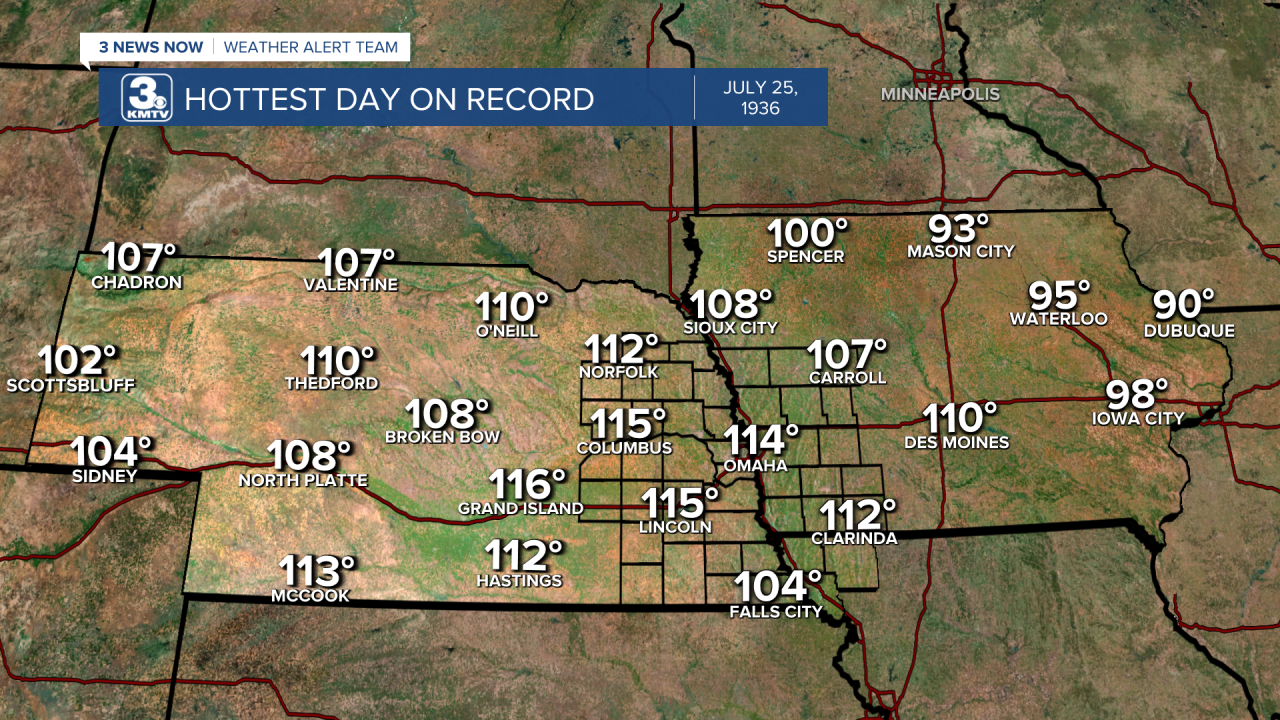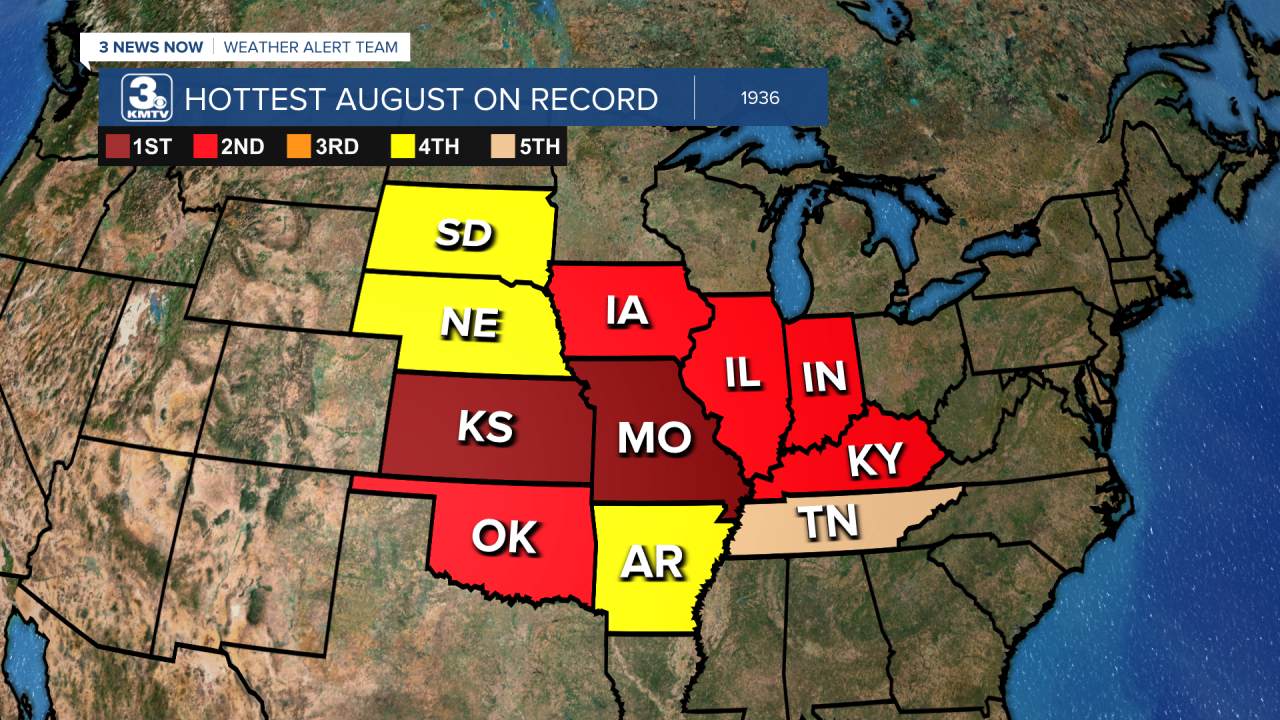Perhaps no other decade has entered the cultural zeitgeist of Nebraska history in terms of its weather than the 1930s. Known as the "Dust Bowl" or the "Dirty Thirties", residents in Nebraska and Iowa dealt with the economic impacts of the Great Depression coinciding with widespread drought. Dust storms became a fact of life across the Plains during the 1930s.
In terms of weather, perhaps no other year has such an extreme range for Nebraska or Iowa then 1936. From record cold in the winter to record heat in the summer, 1936 had it all. Those who froze in February 1936 hoped for a warm summer, they got much more than they bargained for. In this installment of This Week in Weather History, let us return to 1936 to look at the month Nebraska and Iowa melted.
If you are looking for context, check out this article outlining the background information of the 1930s in Nebraska and Iowa. February 1936 was also the coldest month in history for the area, and you can read all about it here.
AFTER FEBRUARY 1936
After the coldest February on record for Nebraska, the temperatures returned to more typical weather as winter moved to Spring. In March, temperatures were right near average for the month, despite it being dry. April was also fairly cool, but nothing record-breaking. By May, the heat slowly began to build, but again no record-breaking heat. By the end of May, temperatures were around 5° above the average May in terms of temperatures. May was also somewhat wet, with May 17 seeing over 2.5" of rainfall.
In terms of severe weather, the season of 1936 in Nebraska and Iowa was relatively quiet due to the dry spring. No tornadoes were reported in eastern Nebraska or western Iowa during Spring 1936.
Just because it was quiet in our area does not mean it was quiet elsewhere. On the evening of April 5, an F-5 tornado ripped through the northern portions of Tupelo, MS. This tornado killed at least 216 people and completely destroyed sections of the town. The Tupelo tornado is the 4th deadliest tornado in U.S. History. Just 12 hours later on the morning of the 6th, an F-4 tornado struck Gainesville, GA. The Gainesville tornado killed at least 203 people, making it the 5th deadliest tornado in U.S. history. When combined, this tornado outbreak is the second deadliest behind the Tri-State Tornado outbreak in 1925.
JUNE 1936: THE HEAT BEGINS
By June 1936, the heat started for areas outside Nebraska and Iowa. Out west, cities like Salt Lake City hit 100° on a few occasions. Records fell from Arizona to Idaho, California to Colorado. By mid-June, the heat began to build over the southeast, with many cities across Mississippi and Alabama hitting consecutive days of 100° or above.
By late June, the heat expanded into the Midwest. Record high temperatures for the month of June were broken across much of the central U.S. — Arkansas, Louisiana, Mississippi, and Missouri hit all-time June record highs. The hottest day in Nebraska was June 26, when the monthly high temperature was broken in Franklin of 114°. Omaha hit 105° that day, making it one of the hottest June days on record for the city. By the end of the month, Kentucky and Tennessee also broke their all-time June high temperatures.
JULY 1936: RELENTLESS HEAT

The heat in Nebraska and Iowa began early in July with highs soaring to above 100° in time for the 4th of July. Omaha experienced its warmest 4th with a high of 110°. Des Moines hit 109°, which was 1 degree shy of the record.

After a break from the extreme heat, and by that it still held in the 90s. Following that was a long stretch of triple-digit temperatures. From July 9 to 19, Omaha hit 100° or greater in all except one day, the second longest streak of triple-digit heat in Omaha history, the longest occurring in 1934.
Elsewhere, the heat persisted across much of the eastern U.S. North Dakota broke its all-time record high of 121°, just months after breaking their all-time record low of -60 in February. Other states such as Missouri broke their all-time high of 115°, but was broken in a later year.

By far the hottest day in Nebraska and Iowa state history came on July 25, 1936. It began that morning when low temperatures hardly fell below 90°. In fact, Lincoln hit a low temperature of 91°. Outside of the southwest U.S., this is one of the warmest overnight low temperatures in the country. It was so warm that people slept on the grounds of the capitol building as the home was too hot.
By the afternoon, the temperature rose to 114° in Omaha and 115° in Lincoln, both setting the all-time record high temperature. A day before, Minden, NE hit 118°, which is a state-wide record for the hottest temperature. On July 25, Atlantic, IA hit 117°, the hottest temperature in Iowa state history.

Luckily, July 25 was the final hurrah of the extreme heat, for temperatures gradually cooled down by the end of the month.
THE AFTERMATH
August 1936 was still hot. It would be the 4th hottest August on record for Nebraska and the hottest on record in Missouri. After August, temperatures returned to normal by the fall.


While it is hard to estimate the number of dead in Nebraska and Iowa from the heat, it is likely several hundred people perished. Nationally, estimates place the number of people who died of heat illnesses is around 5,000. If this number is accurate, it is one of the deadliest natural disasters in U.S. history.
In a time where A/C was too expensive for the everyday person, not to say dangerous too, homes became like ovens as warm overnight lows failed to cool homes. One of the only buildings in the 1930s with A/C was movie theaters, where theaters saw increased attendance just to beat the heat.
By 1947, a new innovation brought A/C units to a cheaper cost, allowing homes to install them. Nowadays with A/C prevalent, it is unlikely that we see those high of death tolls. A heat wave that rival 1936 was the heat wave of 2012, 86 people died.




